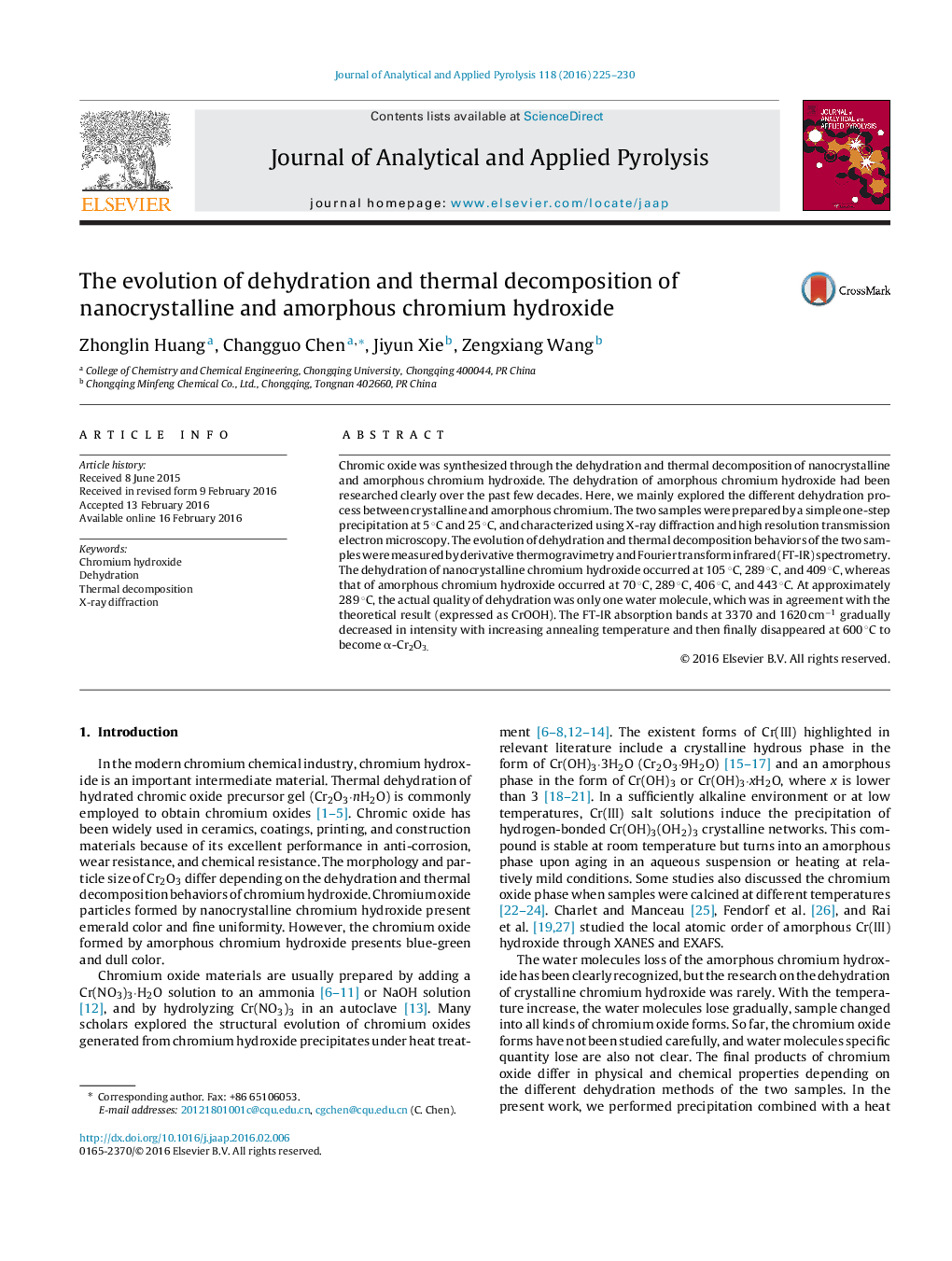| Article ID | Journal | Published Year | Pages | File Type |
|---|---|---|---|---|
| 1198264 | Journal of Analytical and Applied Pyrolysis | 2016 | 6 Pages |
•The actual amount of dehydration was consistent with the theoretical amount.•The intermediate products of amorphous chromium hydroxide were more complex.•At the temperature of 289 °C, the CrOOH was formed in both samples.•Nanocrystalline chromium hydroxide included three dehydration processes.•The amorphous chromium hydroxide included four dehydration processes.
Chromic oxide was synthesized through the dehydration and thermal decomposition of nanocrystalline and amorphous chromium hydroxide. The dehydration of amorphous chromium hydroxide had been researched clearly over the past few decades. Here, we mainly explored the different dehydration process between crystalline and amorphous chromium. The two samples were prepared by a simple one-step precipitation at 5 °C and 25 °C, and characterized using X-ray diffraction and high resolution transmission electron microscopy. The evolution of dehydration and thermal decomposition behaviors of the two samples were measured by derivative thermogravimetry and Fourier transform infrared (FT-IR) spectrometry. The dehydration of nanocrystalline chromium hydroxide occurred at 105 °C, 289 °C, and 409 °C, whereas that of amorphous chromium hydroxide occurred at 70 °C, 289 °C, 406 °C, and 443 °C. At approximately 289 °C, the actual quality of dehydration was only one water molecule, which was in agreement with the theoretical result (expressed as CrOOH). The FT-IR absorption bands at 3370 and 1620 cm−1 gradually decreased in intensity with increasing annealing temperature and then finally disappeared at 600 °C to become α-Cr2O3.
